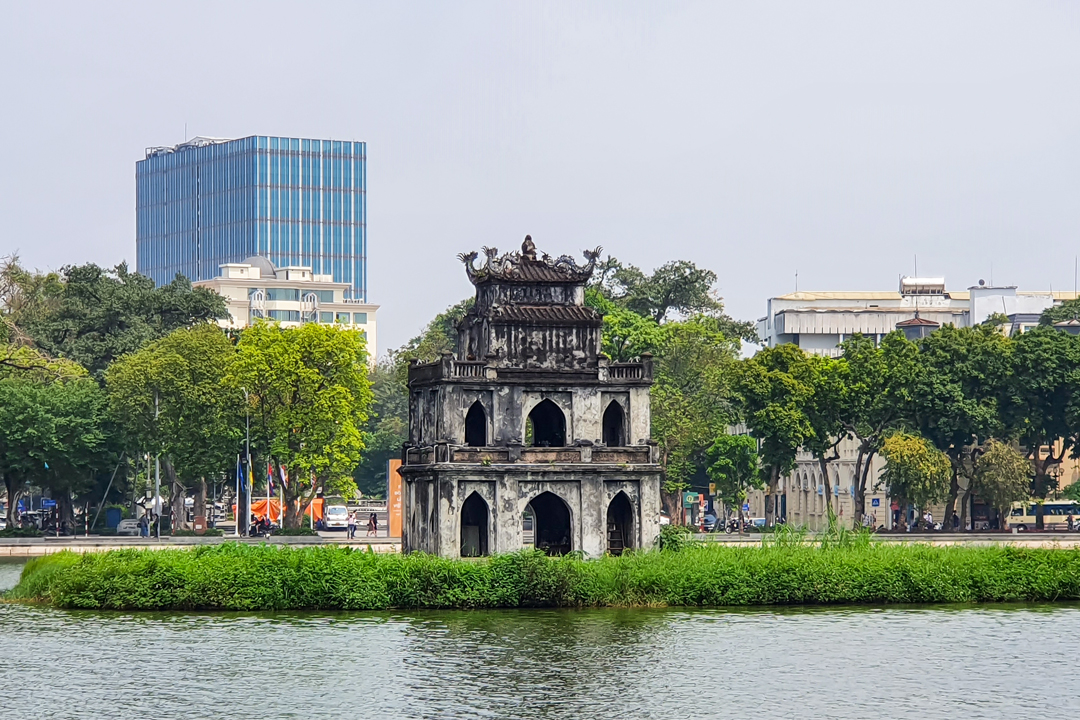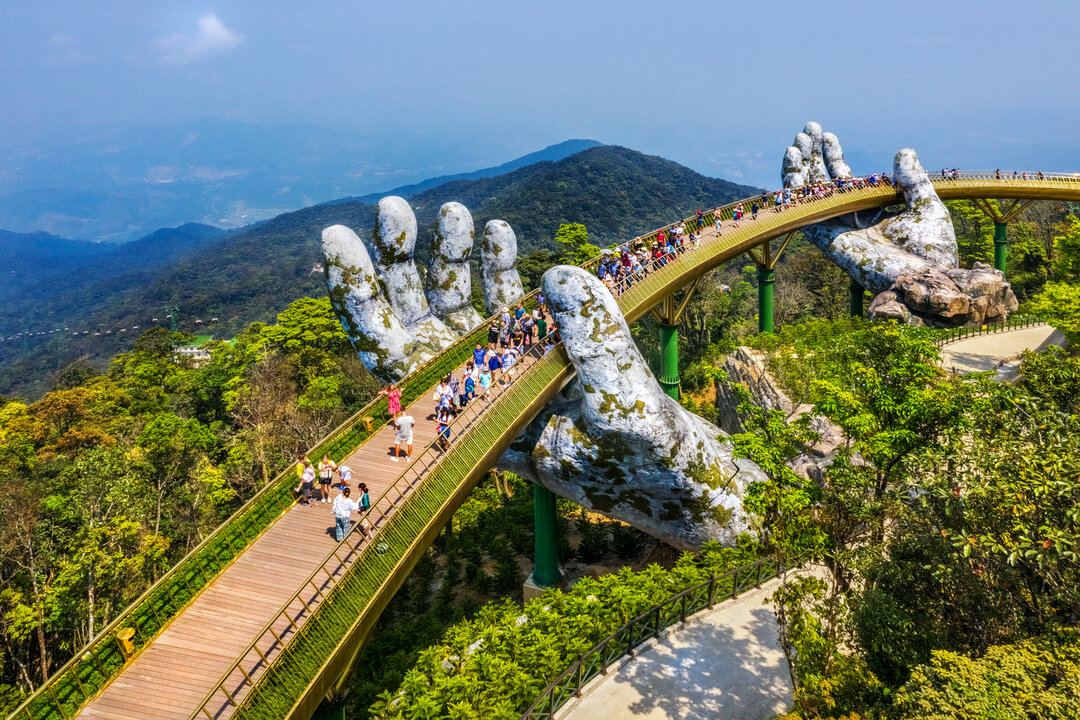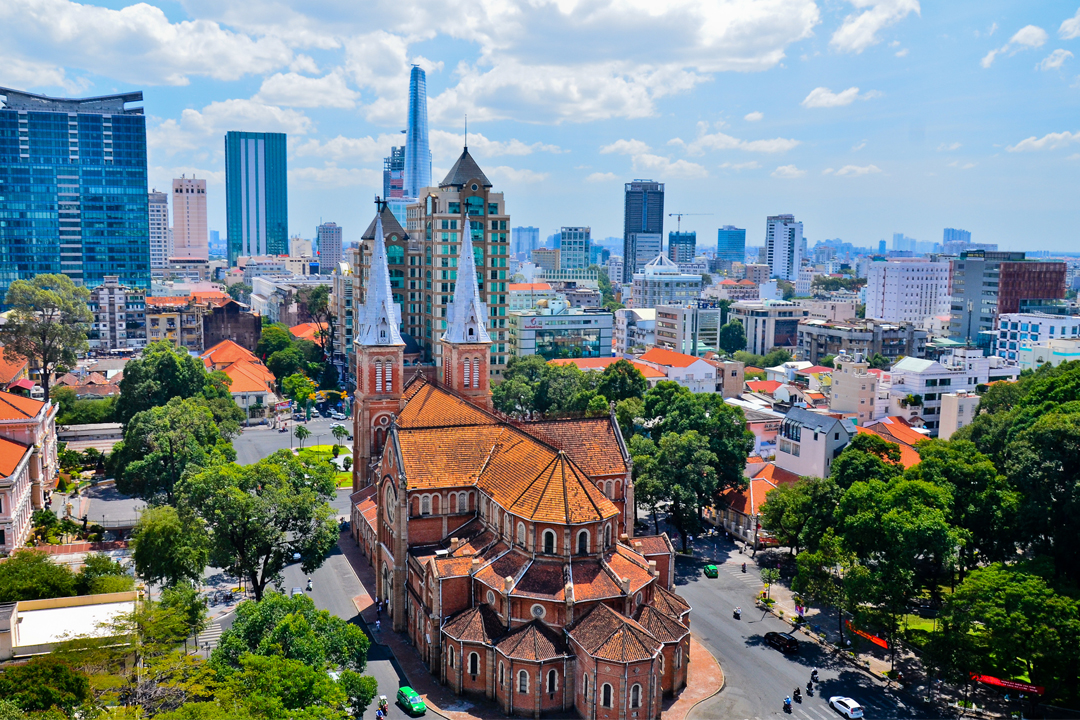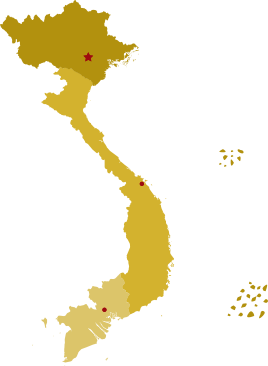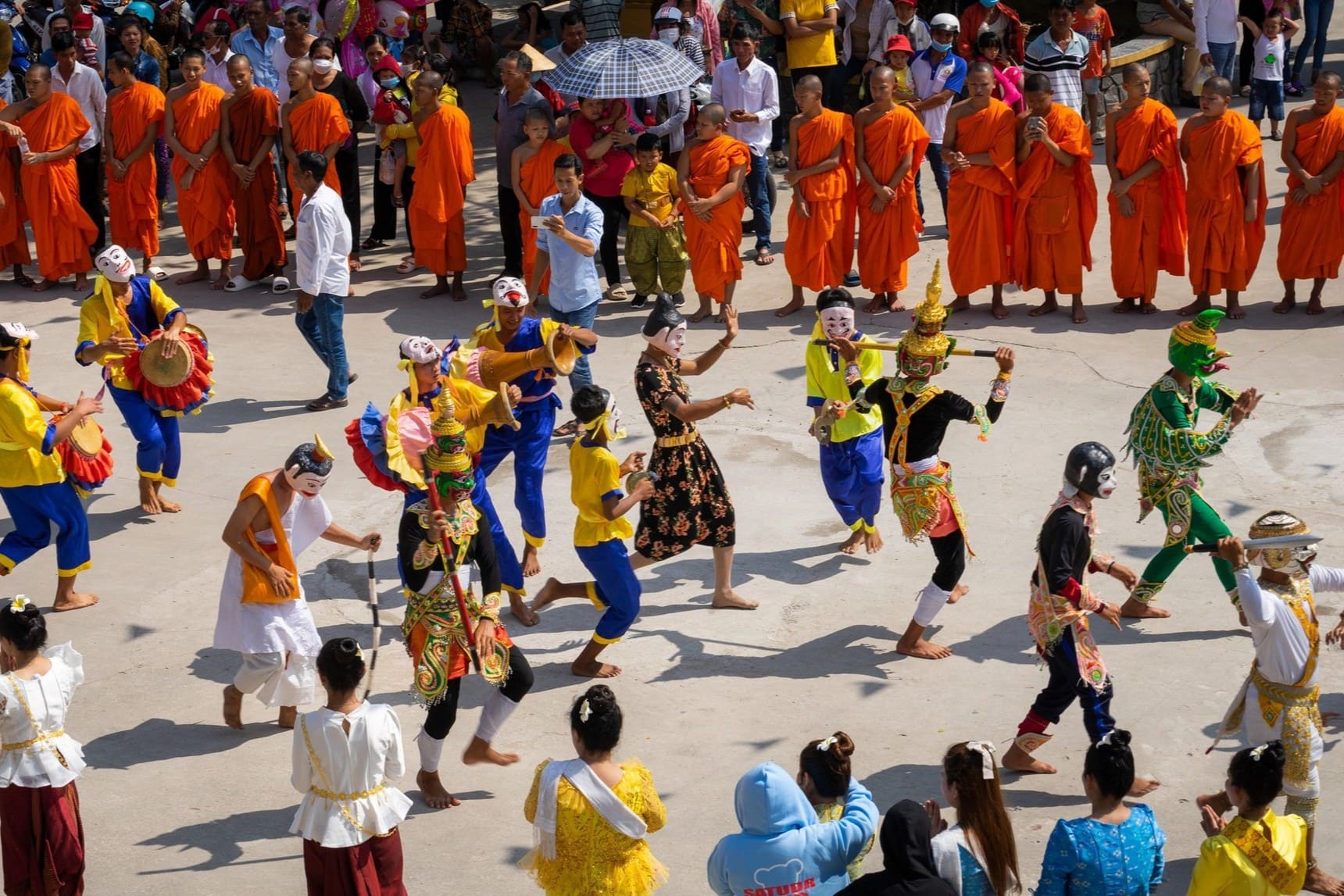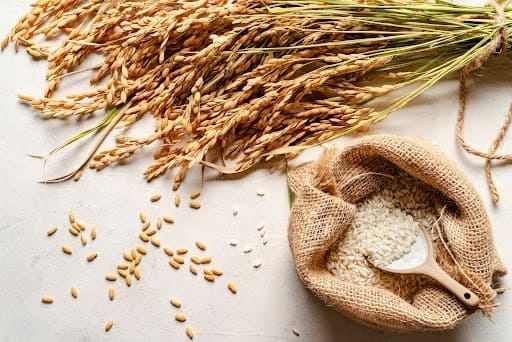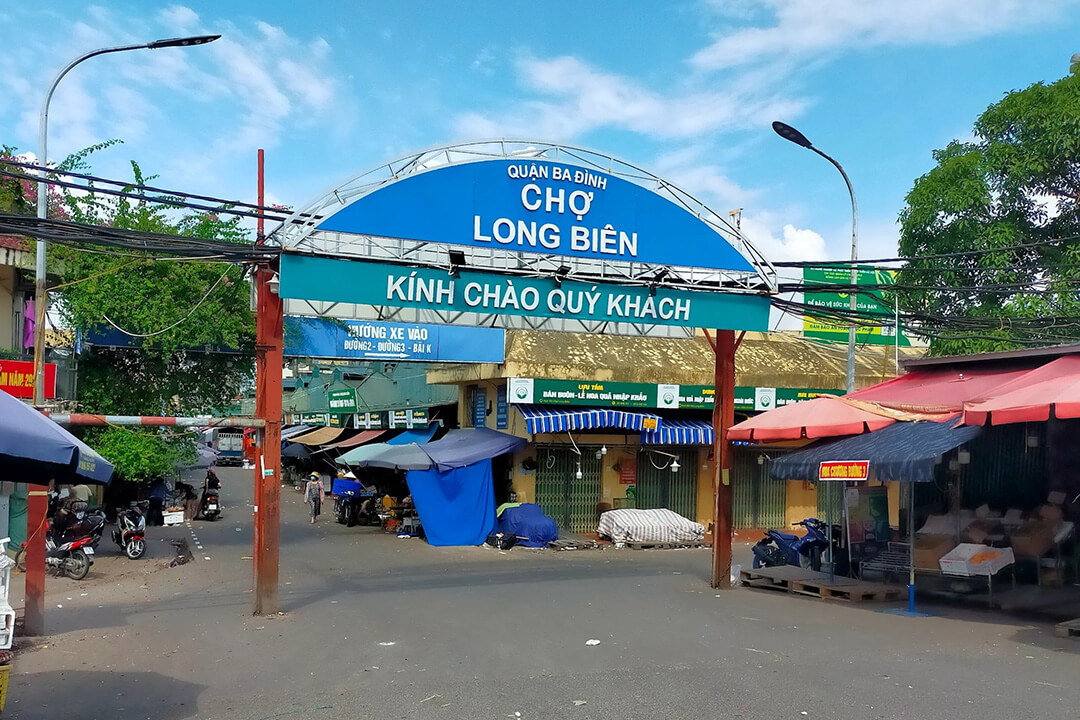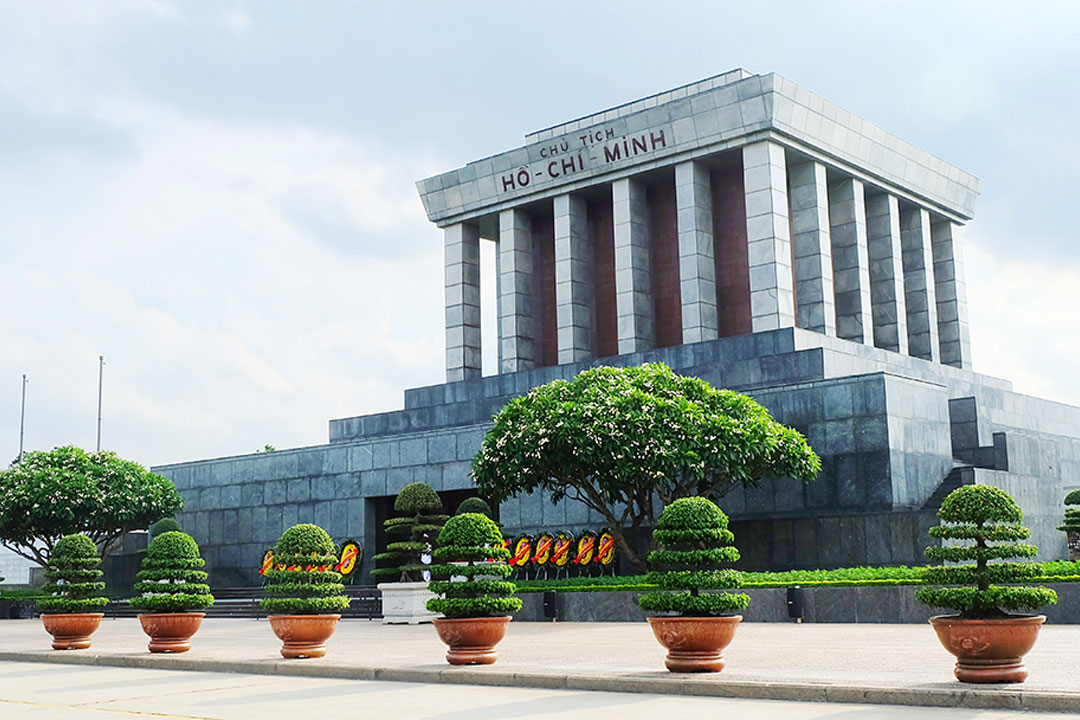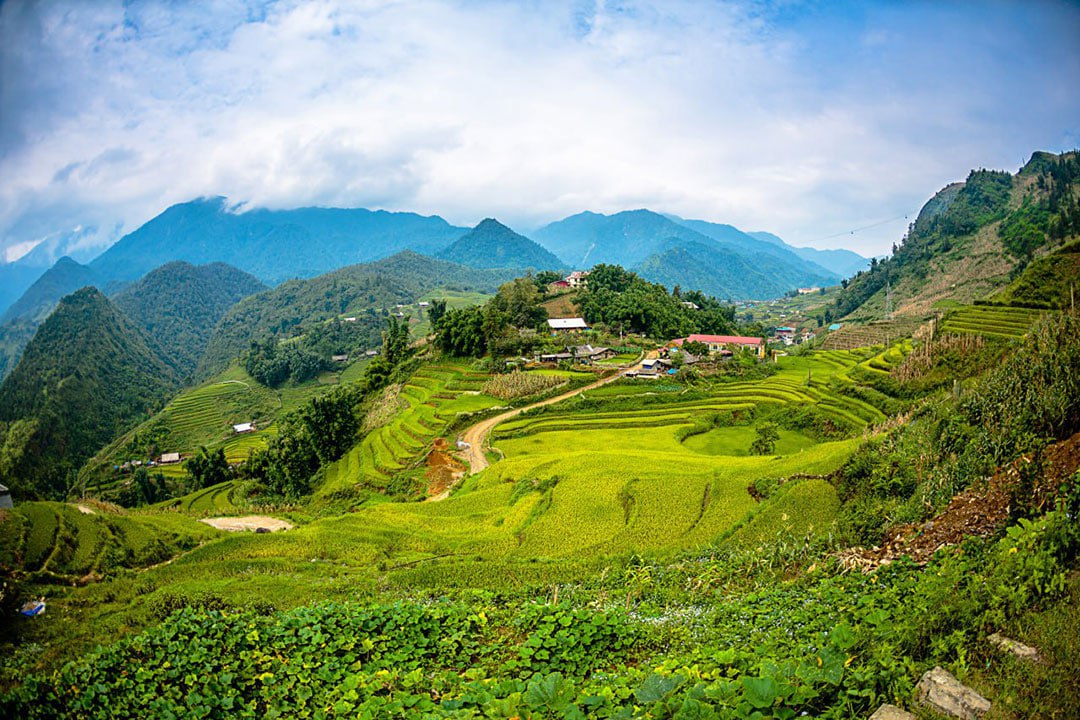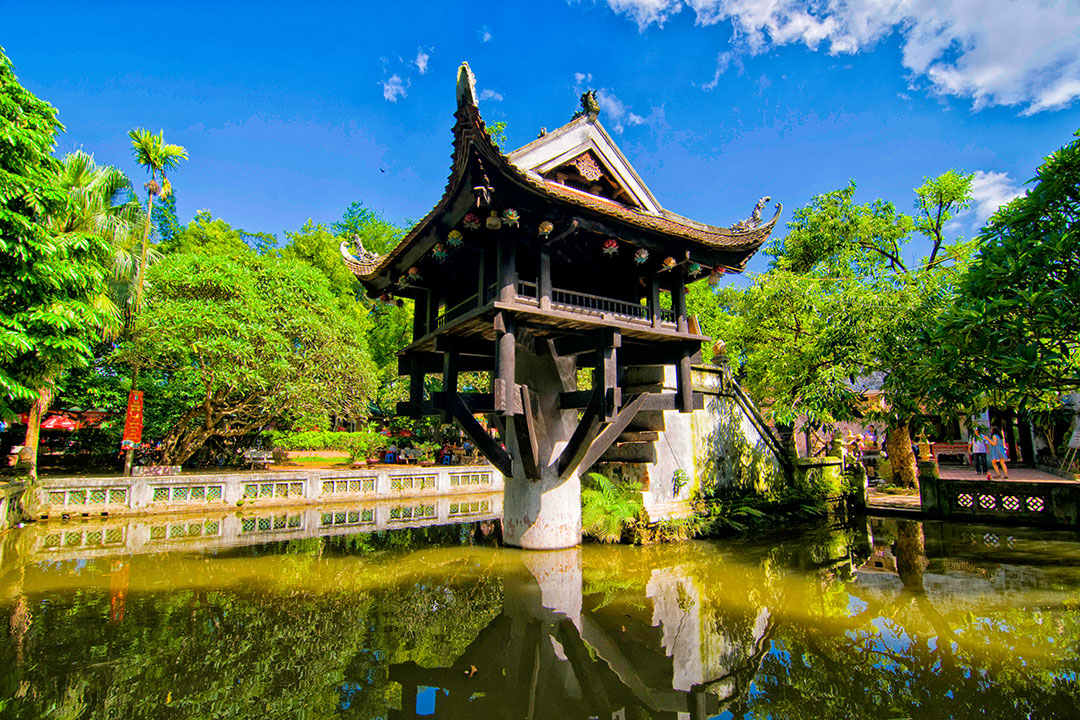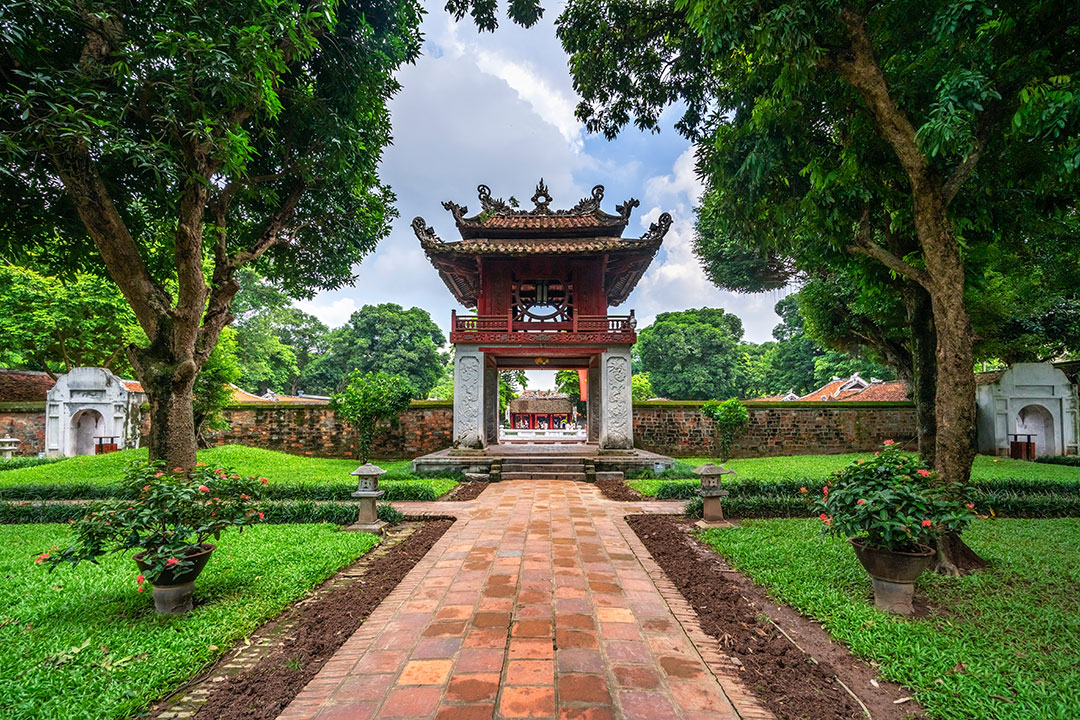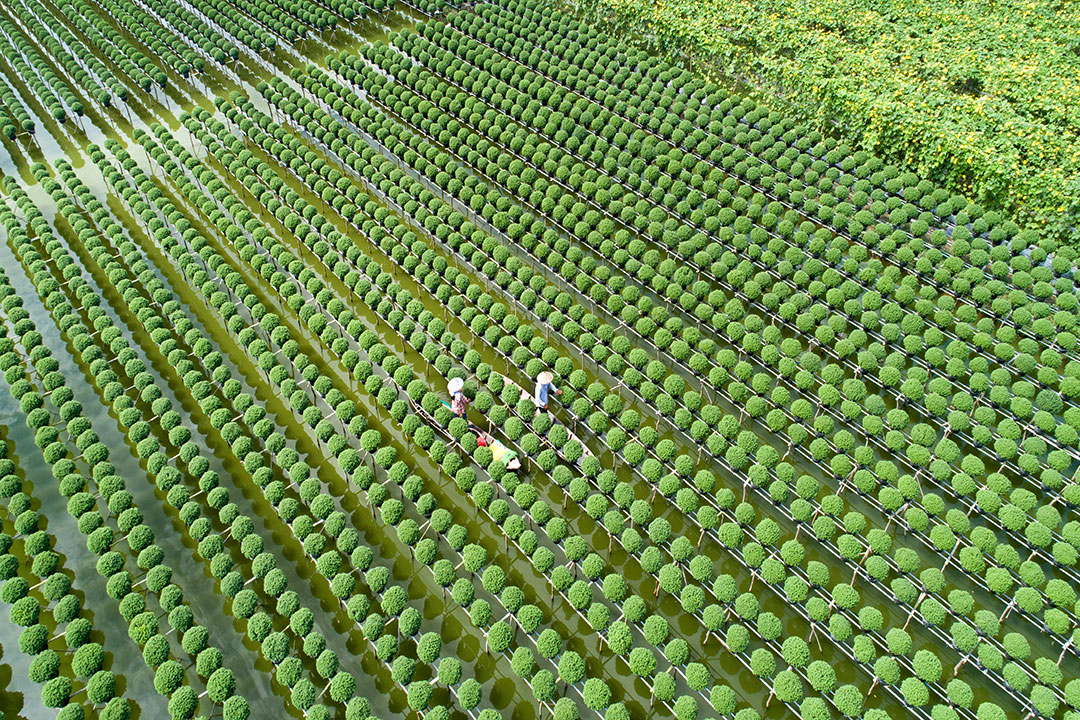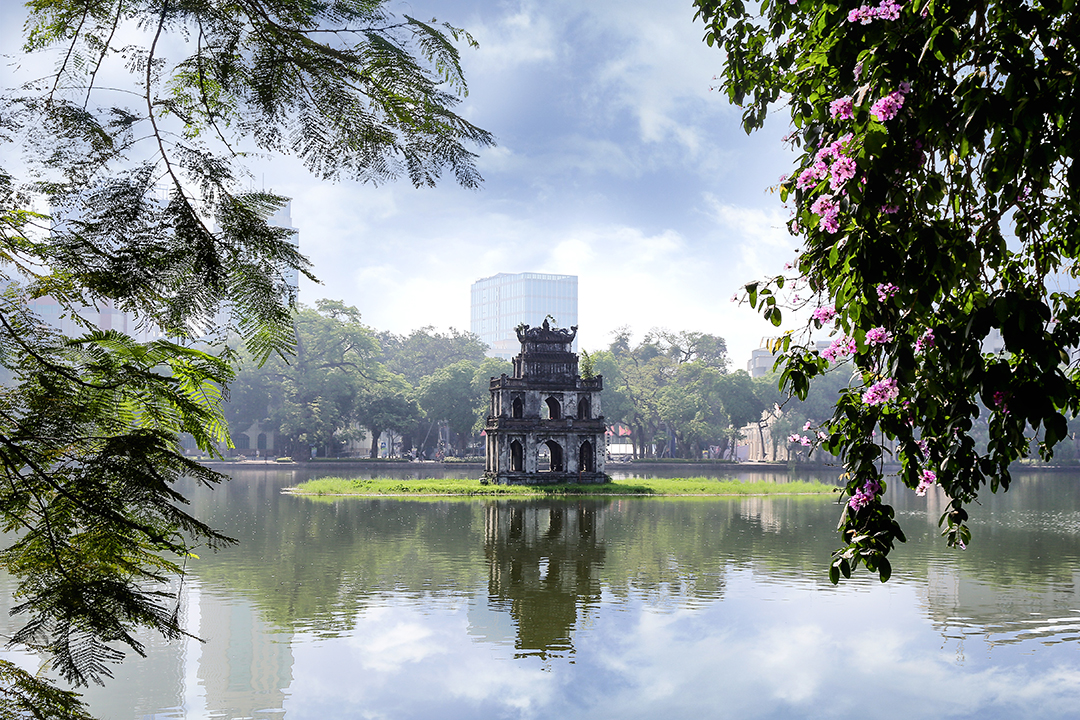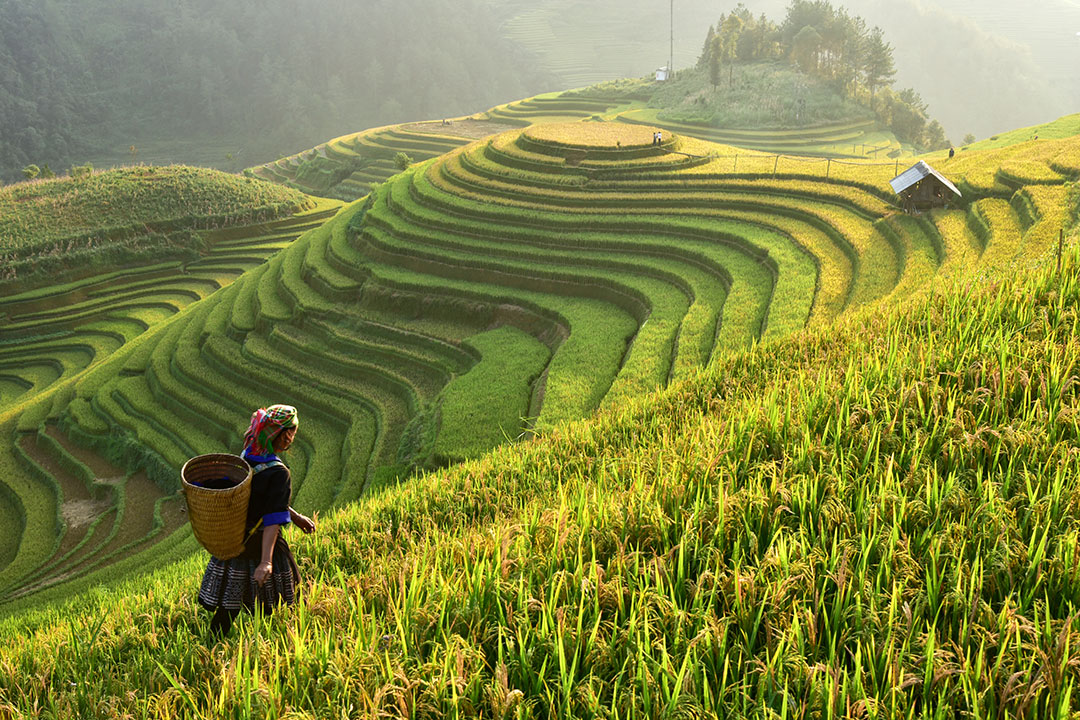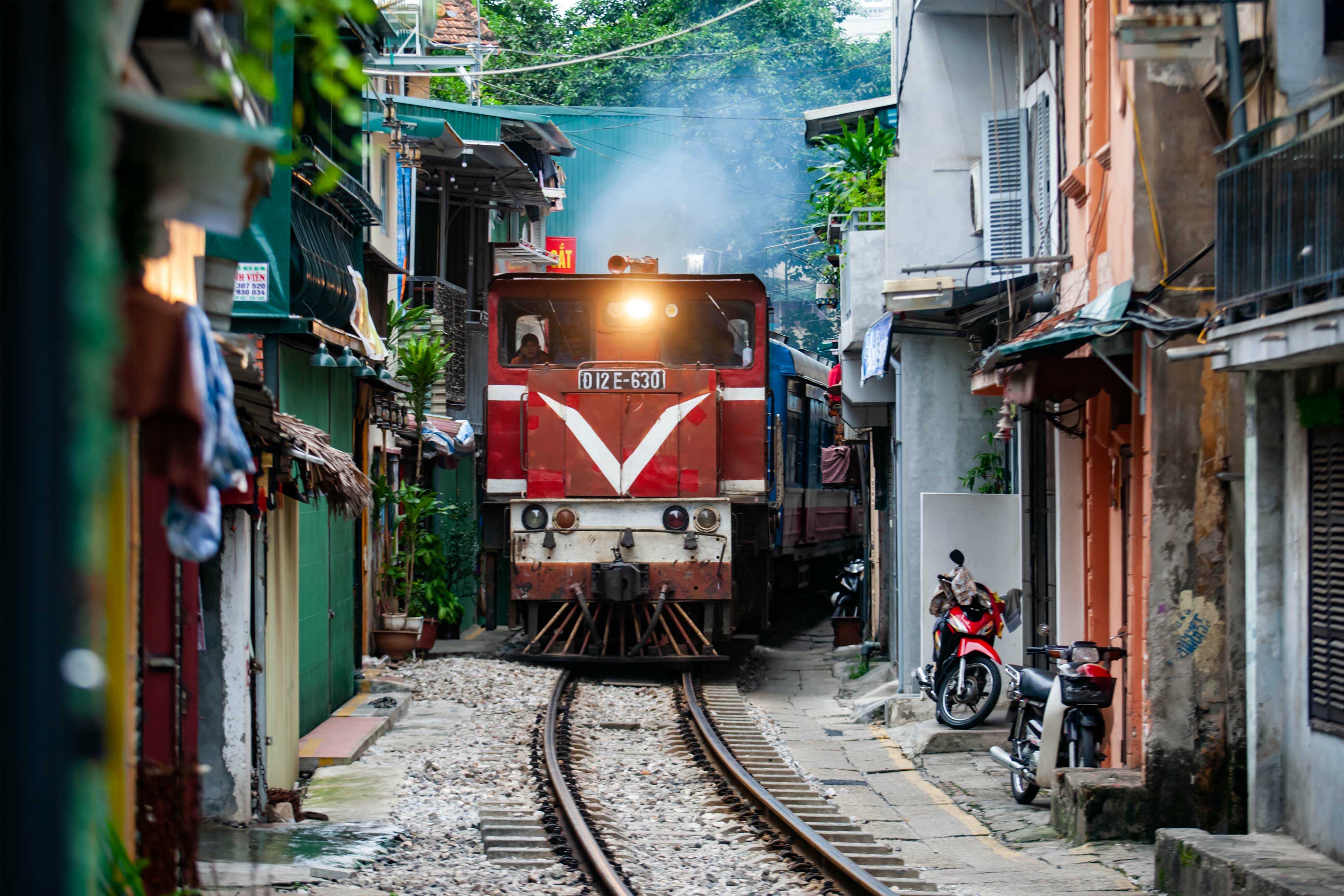Long Bien Market in Hanoi: Location, History, Things To Do & Essential Notes
Amid the vibrant energy of Hanoi, Long Bien Market emerges as a sensory spectacle and an unforgettable exploration for travelers. Operating in the hushed anticipation of night and pre-dawn hours, it’s where the true pulse of Vietnam's capital beats. Beneath towering railway arches and busy streets, this place offers more than traditional wares, it's a vibrant mix of culture, commerce, and community.
For early risers seeking authentic experiences or curious adventurers eager to delve beyond typical tourist paths, this is not merely another market visit. Navigating its vast expanse promises unique discoveries and profound connections with Hanoi’s enduring spirit. Let GTrip guide you through this intriguing marketplace maze, a domain teeming with colors, aromas, and stories waiting to unfold at every corner. It offers you an intimate glimpse into daily routines etched within its lively stalls.
Where is Long Bien Market?
Location: Behind Yen Phu Dike Street, Ba Dinh Ward, Hanoi
Long Bien Market serves as one of the Vietnamese capital's largest wholesale markets. Operating daily from approximately 10:00 PM until dawn, this bustling market reaches peak activity between 2:00 AM and 4:00 AM. The market has gained international recognition for its authentic atmosphere and vibrant trading scene.
The main entrance to Long Bien Market connects directly to Yen Phu Street through an impressive gate structure divided into three sections. The central portion serves as a two-way thoroughfare accommodating both automobiles and motorcycles. The side sections serve as one-way lanes for non-motorized vehicles, separated by massive gray concrete pillars.
International recognition:
- Featured on the international tourist map as an authentic Vietnamese experience
- Named by Go Backpacking Magazine as one of 5 most attractive markets in Southeast Asia
- Listed by Conde Nast Traveler among the world's 7 most interesting flea markets
- Recognized for its unique nighttime trading atmosphere and authentic local culture
- Popular with photographers seeking to capture genuine Vietnamese market life
The market's strategic location near Long Bien Bridge makes it easily accessible from Hanoi's Old Quarter, approximately 2 kilometers away. Situated along the Red River, Long Bien Market serves as a vital distribution point where produce and goods arrive by boat and truck from surrounding agricultural regions. Its position makes it an essential hub in Hanoi's food distribution network and a fascinating window into authentic Vietnamese commerce.

Tucked behind Yen Phu Dike in Hanoi’s Ba Dinh District, Long Bien Market is a lively wholesale hub known for its vibrant night trading and authentic slice of local life
Things to do in Long Bien Market
Long Bien Market offers visitors a genuine glimpse into Hanoi's local life and commerce. Skip the tourist traps, this Hanoi market has it all, from early-morning bargains to tasty evening bites, all wrapped in authentic local flavor.
Explore the bustling wholesale market
Long Bien Market comes alive between 1 AM and 6 AM when fresh produce arrives from surrounding provinces. Vendors arrange colorful displays of regional fruits, vegetables, and flowers in neat rows across the sprawling concrete floors. The market's aisles buzz with activity as restaurant owners and small retailers haggle over prices and quality.
The seafood section showcases everything from live fish to freshly caught river crabs kept in shallow plastic basins. Women in conical hats expertly sort through piles of leafy greens while calling out prices to passing customers. Porters navigate narrow pathways with impossibly balanced loads on bicycles or shoulder poles, demonstrating remarkable dexterity.
Photographers will appreciate the vibrant scenes of commerce bathed in the market's fluorescent lighting. The fruit section features exotic varieties rarely found in Western countries, including dragon fruit, rambutans, and mangosteen. Visiting during major holidays like Tet offers an even more spectacular display when flower vendors bring in special seasonal blooms.
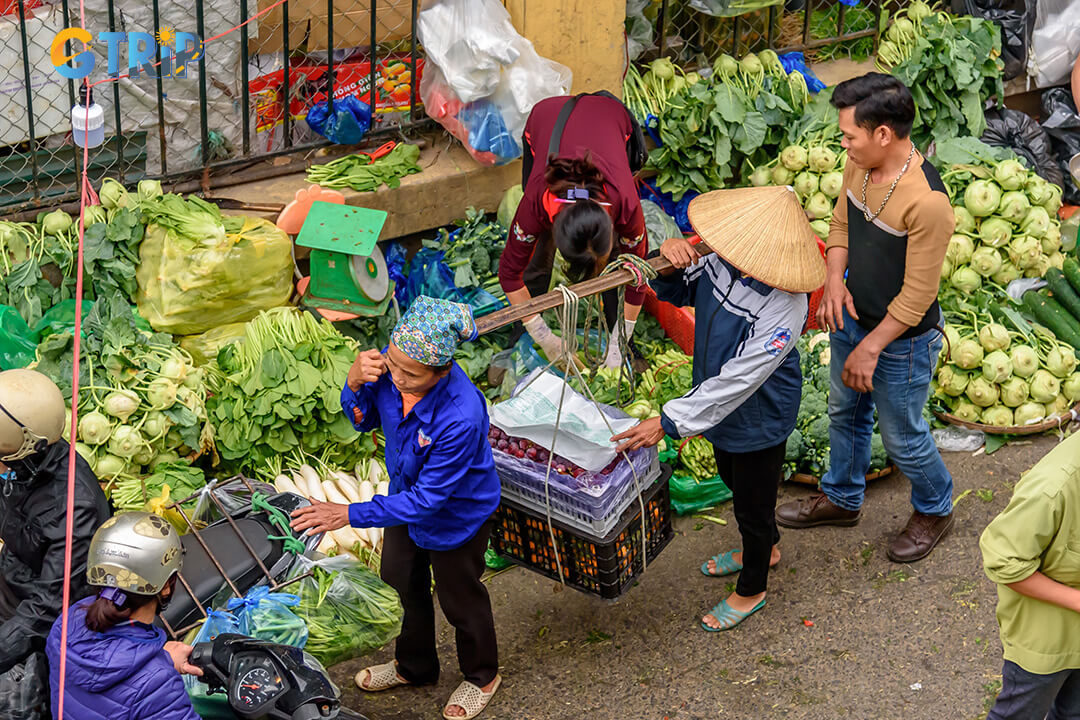
Long Bien Market bursts to life before dawn with vibrant displays of produce, seafood, and flowers, offering a rich, authentic glimpse into Hanoi’s early-morning trade
Enjoy local street food
The perimeter of Long Bien Market is lined with numerous food vendors serving authentic Vietnamese breakfast dishes. Early risers can savor steaming bowls of chicken noodle soup while watching the market activity unfold around them. Many stalls have been operated by the same families for generations, perfecting their recipes over decades.
You shouldn't miss trying banh mi sandwiches filled with pate, fresh herbs, and pickled vegetables. The market's version often comes with a special local twist using ingredients sourced directly from nearby stalls. Several vendors specialize in freshly pressed sugarcane juice, a perfect refreshing drink after exploring the hectic market environment.
For the more adventurous, food stalls offer local delicacies like fried breadsticks dipped in soybean milk. Prices remain remarkably affordable compared to tourist-oriented restaurants in the Old Quarter. Most dishes cost between 20,000 to 50,000 VND (approximately $1-2), making it easy to sample multiple specialties in one visit.
Experience the night market vibe
As daylight fades, Long Bien Market transforms from a produce wholesaler to a nighttime shopping destination on designated evenings. Clothing vendors set up temporary stalls selling everything from knockoff designer items to traditional Vietnamese garments. The atmosphere becomes more relaxed as families and young people browse merchandise under colorful string lights.
Street performers occasionally entertain crowds with traditional music or modern pop songs. The night market section specializes in household goods, electronics accessories, and trendy fashion items at negotiable prices. Savvy shoppers can find unique souvenirs that differ significantly from those sold in tourist areas.
The contrast between morning wholesale chaos and evening leisure shopping showcases the market's dual personality. Food options expand during evening hours to include more snack-oriented offerings like grilled corn, sticky rice, and various sweet desserts. Local teens gather around food carts, creating a community atmosphere that you can observe or join.
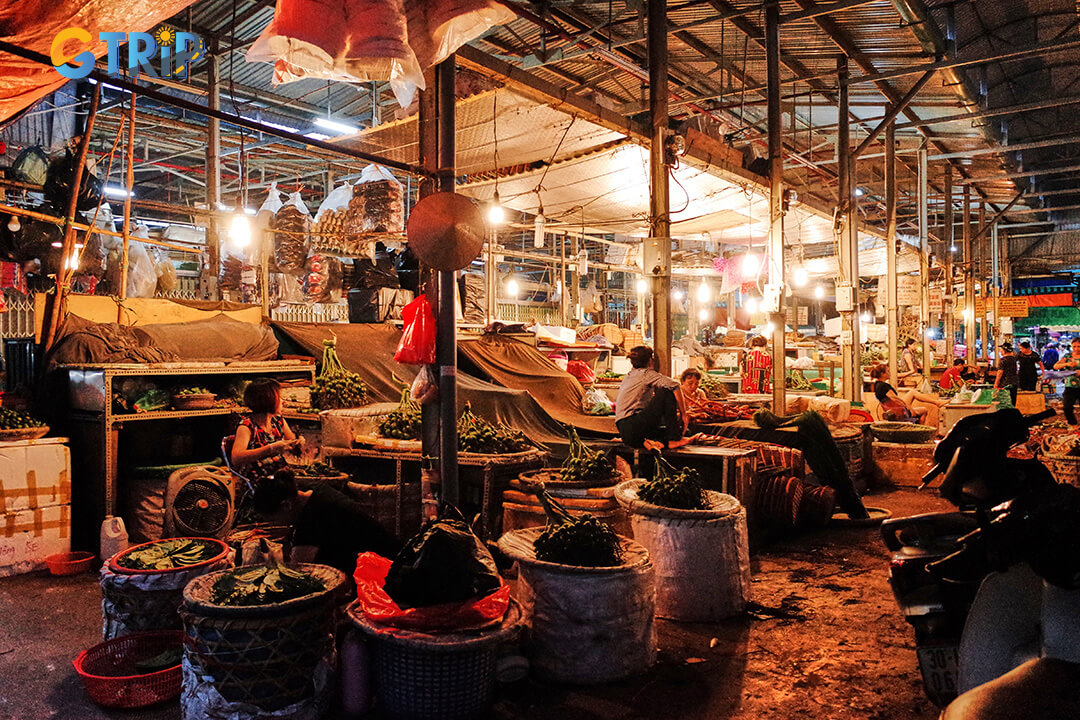
By night, Long Bien Market shifts into a lively shopping spot with clothes, street food, and local entertainment, revealing a vibrant contrast to its bustling morning trade
Photograph the Long Bien Market's atmosphere
Long Bien Market presents endless photographic opportunities with its dramatic lighting and authentic human interactions. Morning mist often creates ethereal scenes as it mingles with market smoke and early dawn light. Vendors' weather-worn faces tell stories of decades spent in trade, offering compelling portrait opportunities.
Photographers should seek permission before taking close-up shots of people or their merchandise. A small purchase often earns goodwill and creates opportunities for more intimate photography. The loading docks provide dynamic scenes of commerce as trucks arrive and depart throughout the early morning hours.
Most vendors appreciate respectful interaction and basic Vietnamese greetings. Learning phrases like "xin chao" (hello) and "cam on" (thank you) goes a long way in building rapport. Many sellers enjoy demonstrating their products or explaining unusual fruits and vegetables to curious visitors. The market's authentic character remains largely unchanged by tourism, offering glimpses into Vietnamese commercial traditions spanning generations.
How to get to Long Bien Market?
Navigating to Long Bien Market is relatively straightforward with several transportation options available to suit different preferences and budgets. Staying in the bustling Old Quarter or elsewhere in Hanoi, the market is accessible via public transport, taxi services, or personal transportation. Each method offers its advantages in terms of cost, convenience, and experience.
By bus
Hanoi's affordable and extensive public bus network provides multiple routes to reach Long Bien Market with minimal expense:
- Bus route 86 operates from Tran Hung Dao in central Hanoi directly to Long Bien Bus Station, with departures approximately every 30 minutes
- The journey takes about 6 minutes in normal traffic conditions, making it one of the quickest public transport options
- Fares are incredibly budget-friendly at just 7,000 to 20,000 VND, ideal for travelers watching their expenses
- Tickets can be purchased directly at the bus stop from ticket agents or conveniently on board from the conductor
- Bus 17 provides an alternative route, crossing Chuong Duong Bridge and connecting central Hanoi to Long Bien, particularly convenient for visitors coming from Noi Bai Airport or staying in the Old Quarter
- Most bus services in Hanoi operate from around 5:00 AM until 9:00 PM daily
- Standard bus fares throughout Hanoi typically range from 7,000 to 20,000 VND per journey
By taxi or ride-hailing apps
For travelers prioritizing convenience and comfort, especially in hot weather or when carrying purchases, taxis and ride-hailing services offer direct transportation:
- Traditional metered taxis from reputable companies like Vinasun and Mai Linh are readily available throughout Hanoi
- Look for taxis with company logos and functioning meters to avoid potential overcharging
- The approximate fare from central Hanoi to Long Bien Market ranges from 30,000 to 50,000 VND ($1.30 to $2.20), depending on traffic conditions and precise starting location
- Ride-hailing applications, including Grab, Be, and Xanh SM, provide convenient alternatives with upfront pricing and the ability to track your journey
- These apps often offer comparable or slightly lower prices than traditional taxis, with the added convenience of cashless payments
| Transportation method | Approximate cost | Journey time | Availability |
|---|---|---|---|
| Bus (route 86) | 1,000 - 2,000 VND | 6 minutes | Every 30 mins (5 AM - 9 PM) |
| Traditional taxi | 30,000 - 50,000 VND | 15 - 25 minutes | 24 hours |
| Ride-hailing apps | 25,000 - 45,000 VND | 15 - 25 minutes | 24 hours |
By motorbike
Motorbikes remain the most popular mode of transportation among locals in Hanoi, offering flexibility and the ability to navigate through congested traffic:
- Motorbike taxis can be hailed directly on the street or booked through apps like Grab or Be for a more regulated fare
- The typical fare for a short journey from the Old Quarter to Long Bien Market ranges between 15,000 to 30,000 VND ($0.65 to $1.30)
- For more independent travelers, renting a motorbike provides the freedom to explore Long Bien and surrounding attractions at your own pace
- Motorbikes typically prove faster than cars during Hanoi's notorious rush hour traffic, particularly when navigating the narrow streets surrounding the market
- If renting a motorbike, ensure you have sufficient riding experience, as Hanoi traffic can be chaotic and intimidating for first-time riders
- Always wear a helmet (required by law) and check that your travel insurance covers motorbike riding
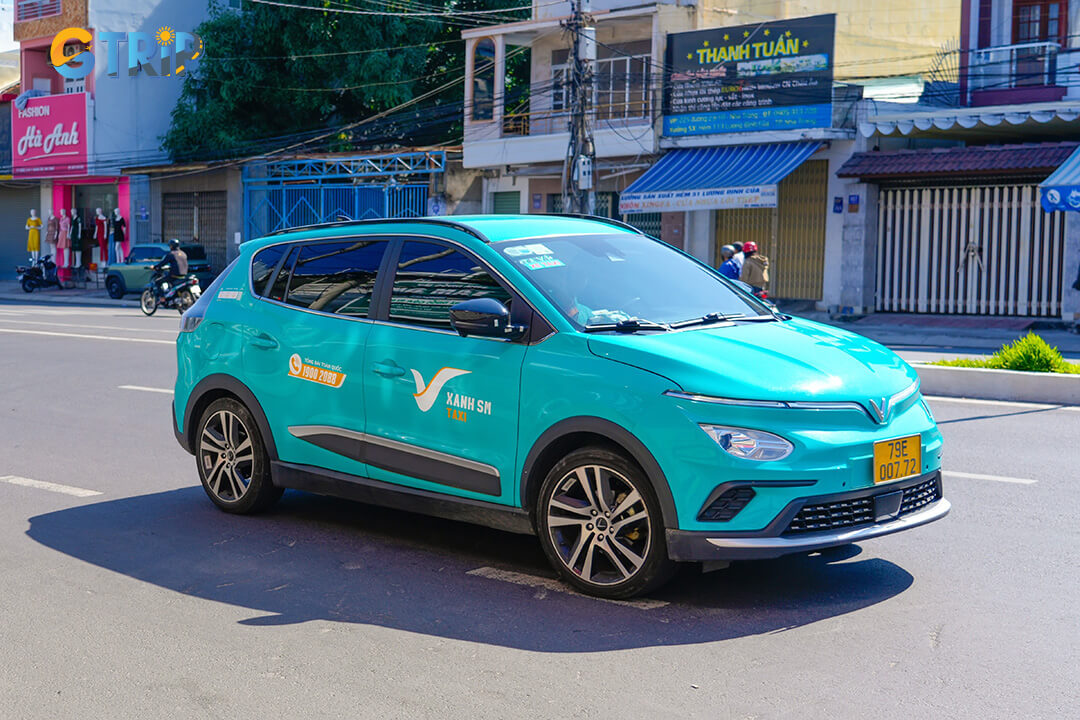
Long Bien Market is easily accessible from Hanoi’s Old Quarter by bus, taxi, or motorbike, offering flexible options for every budget and travel style
Important notes when visiting Long Bien Market
Navigating Long Bien Market requires awareness of local customs and practical safety considerations to ensure a respectful and enjoyable experience. As Hanoi's largest wholesale market, the bustling environment demands that visitors adapt to its unique rhythm and etiquette. Here are essential guidelines to help you navigate this authentic Vietnamese marketplace confidently.
Market etiquette and respectful behavior
When exploring Long Bien Market, respecting local customs enhances your experience and relationships with vendors. Vietnamese culture values politeness and personal space, even in crowded markets.
Greeting vendors with a simple "Xin chao" (hello) creates goodwill, especially if you're interested in their products. Maintain a calm demeanor and avoid loud behavior, particularly during peak trading times (2 - 4 AM) when vendors are conducting serious business transactions. While photography captures memorable scenes, always request permission before taking close-up photos of individuals, a smile and gesture toward your camera usually suffices.
Bargaining etiquette at Long Bien differs from tourist markets. Here, negotiations typically occur for bulk purchases, not single items. As a visitor, observe rather than participate in these wholesale transactions unless buying larger quantities. When moving through the market, be conscious not to block pathways or disrupt vendors' work, step aside when porters or vehicles need to pass.
Safety precautions and navigation tips
Long Bien Market's physical environment requires attention to practical safety concerns for a trouble-free visit:
- Watch your footing: Floors are often wet from washing produce or melting ice, making surfaces unexpectedly slippery
- Stay alert in narrow aisles: Porters with loaded carts move quickly and expect others to yield
- Maintain awareness of surroundings: The market layout can be disorienting for first-time visitors
- Keep belongings secure: Use a front-facing bag and avoid displaying valuable items
- Be cautious during nighttime visits: Prefer visiting with a local guide if exploring after dark
| Time of visit | Safety level | Crowding | Recommendation |
|---|---|---|---|
| 1 AM - 4 AM | Moderate | Very high | Visit with a guide, stay in the main areas |
| 5 AM - 8 AM | High | High | Good for authentic experience, manageable |
| 9 AM - 4 PM | Very high | Moderate | Best for first-time visitors, easier navigation |
| Evening | Moderate | Low | Avoid isolated areas, preferably visit with company |
Environmental consciousness is also important, avoid littering and respect the space. Most vendors work hard to maintain their areas, and discarded waste contributes to slippery conditions. By following these guidelines, you'll experience the authentic charm of Long Bien Market while showing respect for local customs and ensuring your comfort and safety.

To fully enjoy Long Bien Market, visitors should stay mindful of local customs and safety tips while adapting to its lively, fast-paced rhythm
Nearby attractions from Long Bien Market
After exploring Long Bien Market's vibrant atmosphere, extend your Hanoi adventure by visiting remarkable attractions within easy reach. The market serves as an excellent starting point to discover some of Hanoi's most iconic historical and cultural landmarks, all accessible within a short walk or quick drive.
Long Bien Bridge
The historic Long Bien Bridge stands as a living monument to Hanoi's resilience and rich history. Designed by Gustave Eiffel's company and completed in 1903 during French colonial rule. This magnificent steel structure stretches 1.7 kilometers across the mighty Red River, connecting Hoan Kiem and Long Bien districts.
Walking across the pedestrian path of Long Bien Bridge offers spectacular views of the Red River, passing trains, and local life unfolding below. The bridge has survived decades of war, bombardment, and natural disasters, with visible patches and repairs telling its story of endurance. Visit during sunrise or sunset for breathtaking photo opportunities as the light transforms the weathered steel structure into a golden landmark against Hanoi's skyline.
Best times to visit Long Bien Bridge:
- Sunrise (5:00 - 6:30 AM): For photographers and early risers
- Late afternoon (4:00 - 5:30 PM): Comfortable temperatures with golden hour lighting
- Evening (7:00 - 8:00 PM): City lights reflection on the river

Long Bien Bridge, a 1903 colonial-era steel structure by Gustave Eiffel’s firm, offers stunning views and stands as a powerful symbol of Hanoi’s resilience and history
Quan Thanh Temple
Dating back to the 11th century during the Ly Dynasty, Quan Thanh Temple is one of Hanoi's four sacred temples built to protect the city from evil spirits. Located near West Lake, this Taoist temple is dedicated to Tran Vu, the God of the North in Vietnamese mythology.
The temple's most impressive feature is a 4-meter tall black bronze statue of Tran Vu created in 1677. The intricate decorations throughout the temple showcase traditional Vietnamese craftsmanship with detailed woodcarvings and ornate altars. You can experience the peaceful atmosphere while observing local worshippers making offerings and praying for good fortune.
| Visitor information | Details |
|---|---|
| Opening hours | 8:00 AM - 5:00 PM daily |
| Entrance fee | 10,000 VND (~$0.40) |
| Dress code | Modest clothing (covered shoulders and knees) |
| Distance from Long Bien Market | Approximately 4 km |
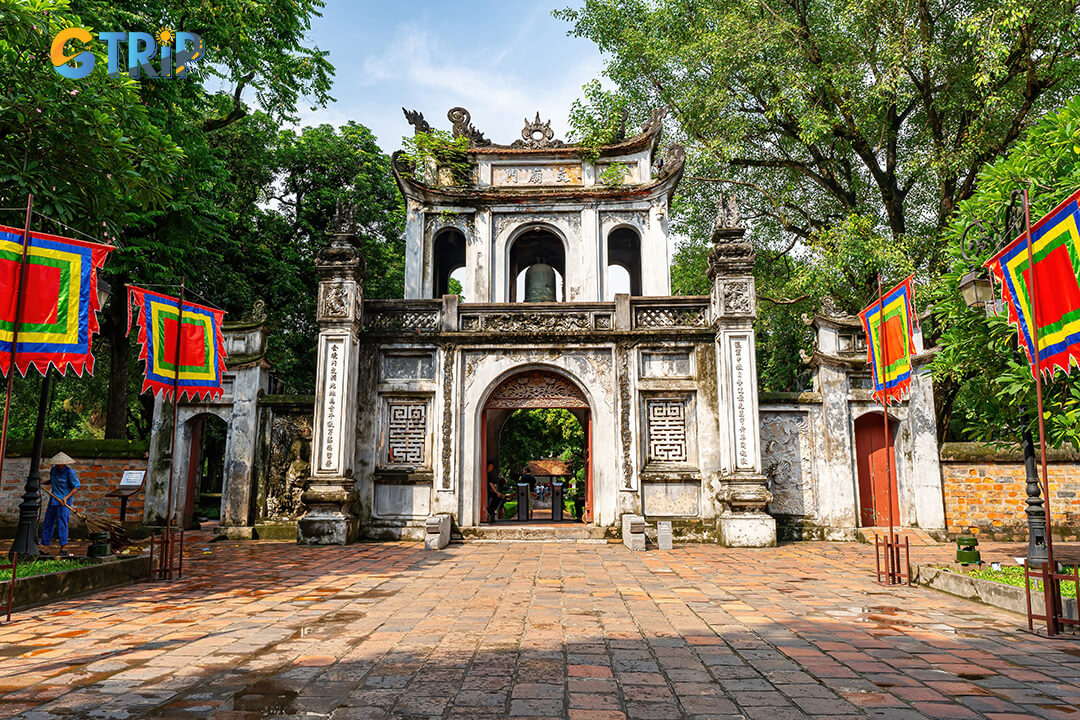
Quan Thanh Temple, an 11th-century Taoist shrine near West Lake, features a majestic bronze statue of Tran Vu and showcases exquisite Vietnamese craftsmanship
Hanoi Ceramic Mosaic Mural
Hanoi Ceramic Mosaic Mural is an extraordinary artistic achievement stretching nearly 4 kilometers along the Red River dike system. Built for Hanoi's 1000th anniversary in 2010, this 1.7-meter-tall mural showcases thousands of ceramic pieces by local and international artists.
Walking along the mural reveals a visual journey through Vietnam's history, culture, and daily life. Each section tells different stories, from ancient legends to contemporary scenes, using traditional pottery techniques combined with modern artistic vision. This vibrant mosaic, the world's longest, holds a Guinness record and offers great photo spots for cultural explorers.
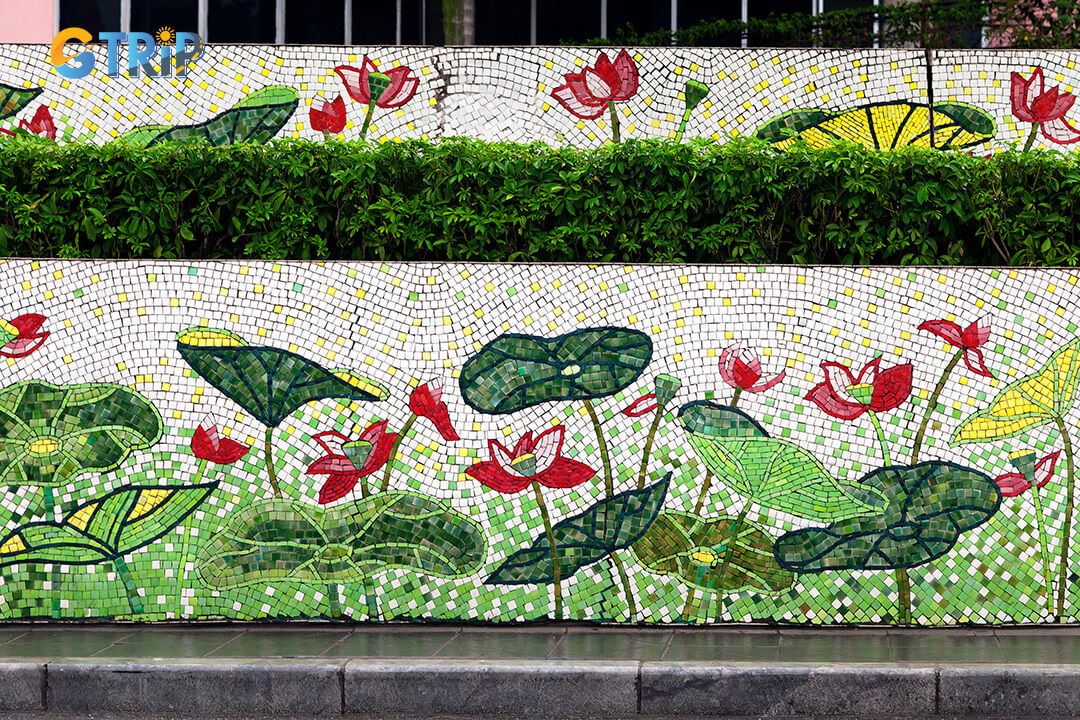
The Hanoi Ceramic Mosaic Mural, nearly 4 kilometers long and Guinness-certified, vividly portrays Vietnam’s history and culture through thousands of ceramic pieces
Hanoi Old Quarter
The bustling Hanoi Old Quarter captures the essence of Vietnam's capital with its maze of 36 ancient streets dating back to the 13th century. Each street was traditionally named after the specific goods once sold there, such as Hang Bac and Hang Gai, many of which still specialize in their namesake products today.
The area's charm lies in its narrow "tube houses", built long and thin to reduce colonial-era street frontage taxes. Wandering through the Old Quarter offers an authentic glimpse into local life where you'll find:
- Street food vendors serving traditional Vietnamese dishes
- Ancient temples and communal houses hidden between commercial buildings
- Local artisans are crafting traditional goods in small workshops
- French colonial buildings with distinctive yellow facades and shuttered windows
- Bustling markets selling everything from souvenirs to everyday necessities
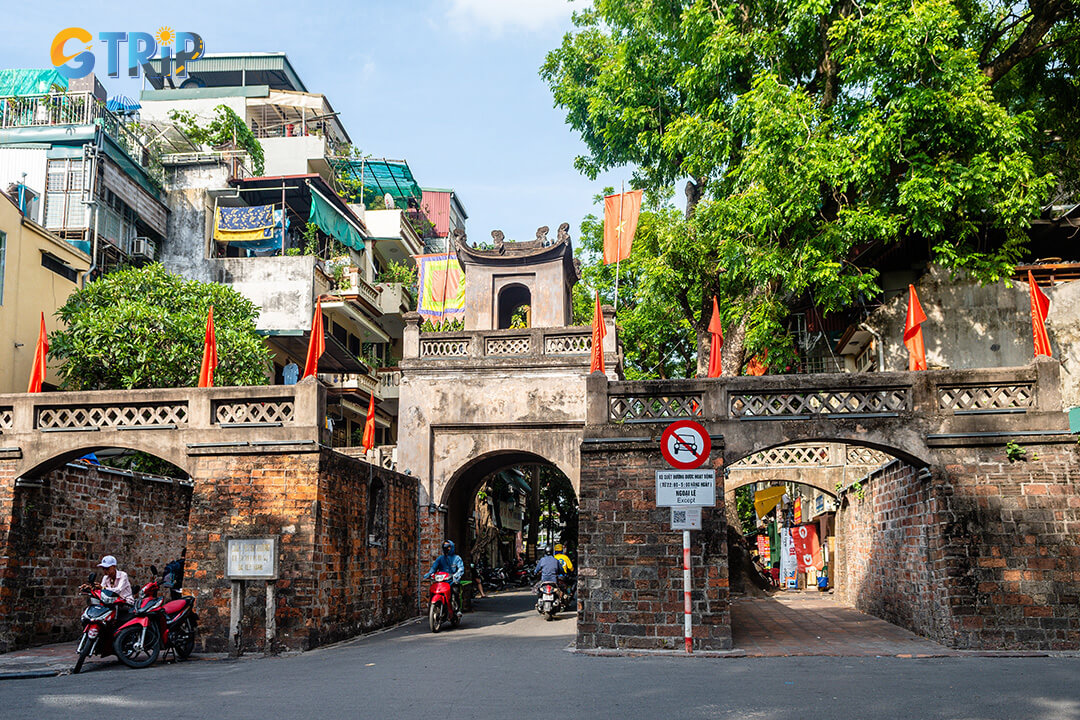
Hanoi’s Old Quarter, with its 13th-century streets, narrow tube houses, and vibrant markets, offers an authentic glimpse into the city’s rich history and daily life
Hoan Kiem Lake
Just a short 10-minute drive from Long Bien Market, Hoan Kiem Lake (Lake of the Returned Sword) forms the scenic and spiritual heart of Hanoi. This enchanting freshwater lake spans approximately 12 hectares and is steeped in Vietnamese legend about Emperor Le Loi receiving a magical sword from the Golden Turtle God.
The picturesque lake features the iconic red Huc Bridge leading to Ngoc Son Temple on a small island. The surrounding area transforms throughout the day, from a tranquil morning exercise spot for locals practicing tai chi to a lively evening gathering place for families and young couples. On weekends, the streets around the lake become pedestrian-only zones with street performances, games, and food stalls creating a festive atmosphere.
Must-do activities at Hoan Kiem Lake:
- Cross to The Huc Bridge to visit Ngoc Son Temple
- Spot the rare giant softshell turtles that occasionally surface
- Enjoy Vietnamese coffee at one of the lakeside cafes
- Join locals for early morning exercise sessions
- Take a stroll around the lake's 1.5 km perimeter
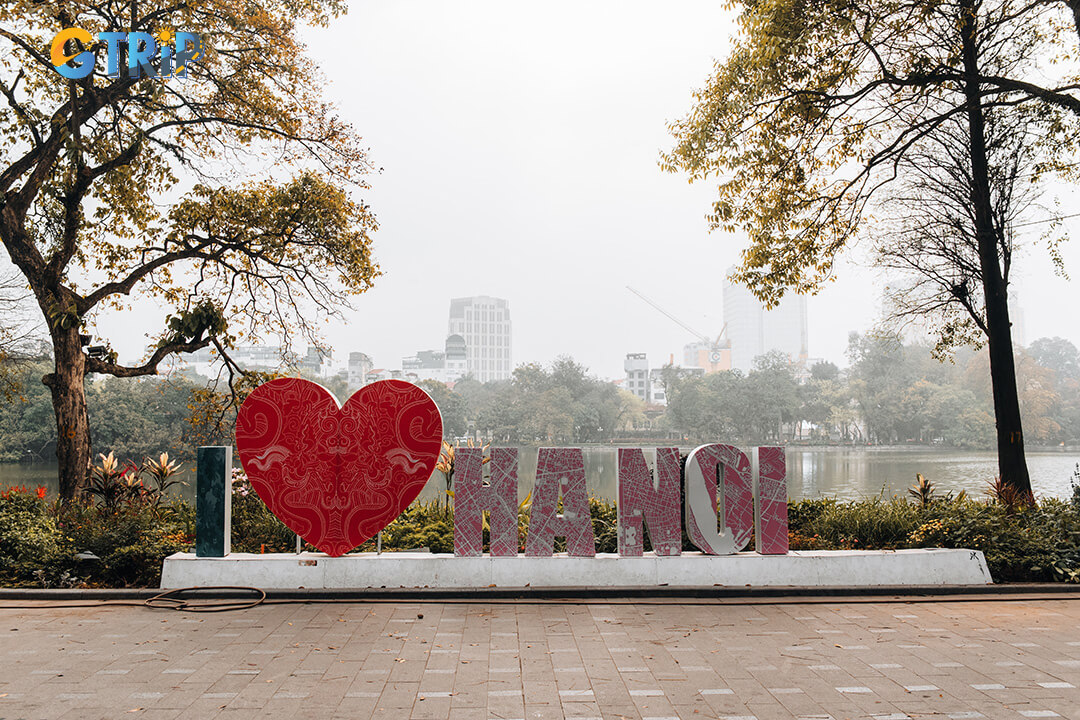
Hoan Kiem Lake is Hanoi’s scenic and spiritual heart, famed for its legends, iconic red bridge, and lively community atmosphere
Visiting Long Bien Market offers a unique glimpse into the vibrant culture and daily life of Hanoi. By immersing yourself in its bustling atmosphere, you've uncovered an essential part of Vietnam's rich tapestry, where tradition meets the modern hustle. The experiences and memories forged here resonate far beyond the market’s boundaries, offering a new perspective on local customs and flavors. Feel inspired to embrace your curiosity further, which means planning your next adventure or simply savoring the stories you've gathered along the way. If you're curious to learn more, let your questions lead the way with GTrip as your travel storytelling companion. Carry these insights forward, knowing every journey broadens horizons and enriches life's canvas in unexpected ways.

